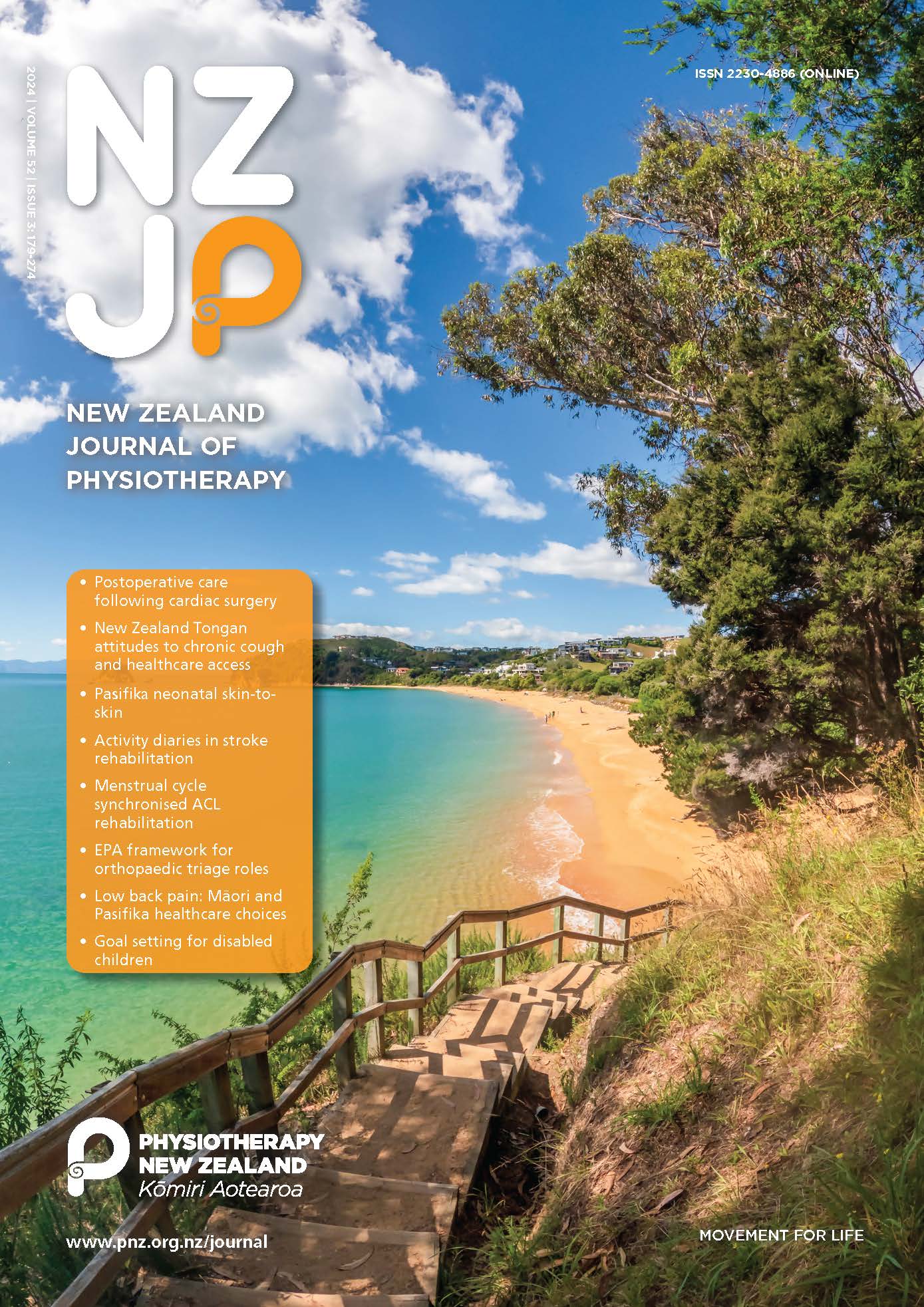Inpatient stroke rehabilitation activity: Barriers, enablers, and changes in activity behaviour with diary use
DOI:
https://doi.org/10.15619/nzjp.v52i3.420Keywords:
Barriers and Enablers, Behaviour Mapping, Clinical Practice Guidelines, Implementation, Stroke RehabilitationAbstract
The Australian Stroke Foundation guidelines recommend participation in at least 3 hours of physical and occupational therapy daily during stroke rehabilitation. The majority of services in Australia do not currently meet this guideline. This study explored the usefulness of activity diary implementation in increasing activity during inpatient stroke rehabilitation and identified barriers and enablers to activity level guideline adherence, as perceived by clinicians. Using a mixed-methods, longitudinal embedded-design study, two participant cohorts were recruited: people undergoing inpatient stroke rehabilitation and stroke rehabilitation clinicians. Behaviour mapping pre- and post-implementation of activity diaries measured inpatient activity levels. Clinician surveys assessed enablers and barriers to inpatient activity level guideline adherence, both pre- and post-implementation. Twelve adults undergoing inpatient stroke rehabilitation were included. Trends toward reduced time spent sedentary (d = –0.797, 95% confidence interval (CI) [–1.811, 0.217]), increased independent ADL practice (d = 0.861, 95% CI [–0.159, 1.88]), and lower limb active practice were noted after diary implementation (d = 0.778, 95% CI [–0.234, 1.791]). Sixteen clinicians completed 14 pre-diary implementation and nine post-implementation surveys. The main themes identified as clinician-perceived barriers to activity level guideline adherence included de-prioritisation of activity, staff shortages, caseload demands, lack of family and patient-friendly resources, and stroke-related factors. The facilitators included activity diaries, behaviour change, and multidisciplinary communication. Active time among people undergoing inpatient stroke rehabilitation increased after implementation of the diaries. Despite the identified institutional barriers to inpatient activity engagement, activity diaries may assist in promoting an increase in activity among people undergoing inpatient stroke rehabilitation.


